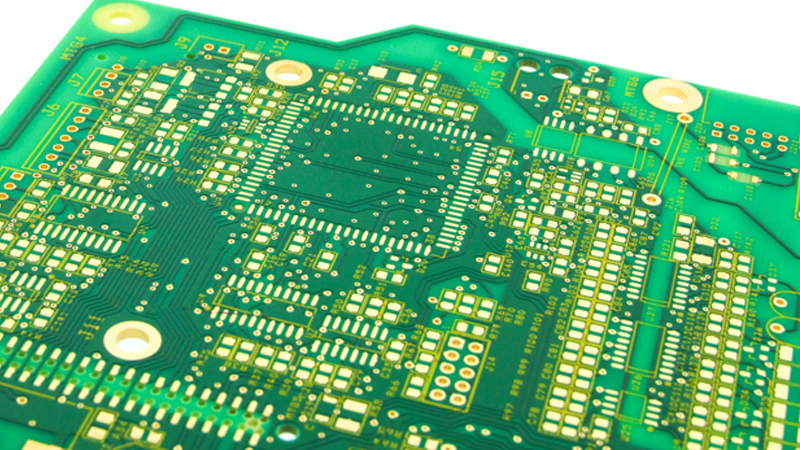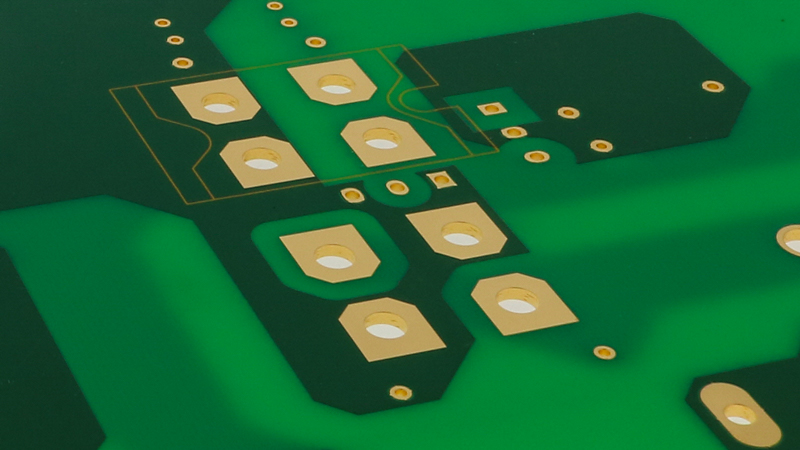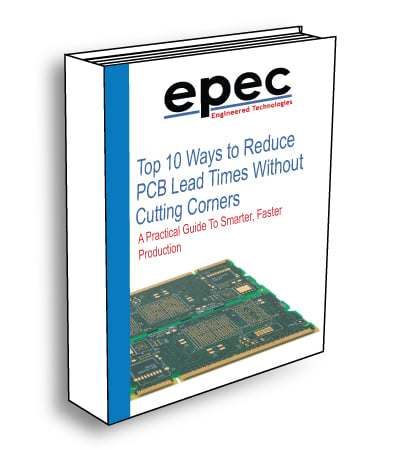Printed Circuit Boards For Industrial Applications
Printed circuit boards (PCBs) are an essential component in modern electronics, and they are found in a wide range of industrial applications. When it comes to choosing a manufacturer for high-tech printed circuit boards for industrial applications, it is crucial to understand the critical attributes of the PCB that will meet the specific needs of the application.
Epec Engineered Technologies has built our business by working with customers on high-technology applications so that we can cost-effectively manufacture those PCBs for our industrial customers. For more than 70 years, we have continued to invest in our technology in order to assure that we can meet the stringent demand for improved industrial electronic devices.
Below we will outline some of the key aspects of PCBs for industrial applications that are of the utmost importance to overall PCB performance.
Material Selection
The choice of laminate material is a critical attribute when it comes to high-tech PCBs for industrial applications. The material used should be suitable for the specific application, considering factors such as temperature, humidity, and environmental conditions. For example, if the application requires high-temperature performance, the circuit board should be made from a material that can withstand those temperatures, such as ceramic or polyimide.
The choice of material can also affect the PCBs electrical properties, including its dielectric constant, loss tangent, and insulation resistance. These factors can affect signal integrity, noise, and interference, which can significantly impact overall performance. For high-frequency applications, materials such as Rogers or Teflon may be preferred due to their low dielectric constant and loss tangent.
The PCB must be able to withstand mechanical stress, such as vibration and shock, without breaking or losing its electrical properties. Materials such as FR-4 are commonly used for their mechanical strength and durability. However, for more demanding applications, materials such as ceramics or composites may be preferred as the PCB must be able to withstand the harsh environment in which it operates without failing. Laminate materials that have high resistance to moisture, chemicals, and other environmental factors are preferred in such applications. Ceramic, polyimide, and Teflon are known for their excellent durability and reliability, making them ideal choices for high-end industrial PCB applications.
Trace Width and Spacing
The width and spacing of the traces on the PCB must be designed to meet the specific electrical requirements of the application. This is because the spacing between conductive traces and the width of the traces themselves can significantly impact the PCBs performance in terms of signal integrity, noise, and interference.
In industrial applications, PCBs are often used to transmit sensitive signals and data between various components of a system. The signal's accuracy and reliability are crucial to the overall system's performance. A high-quality PCB must have precise and consistent line width and spacing to ensure that the signals are transmitted accurately and reliably without interference or signal degradation.
Tight line width and spacing also increase the circuit boards overall density, allowing for more components to be placed on a single board, leading to smaller form factors and higher functionality. This is particularly important in industrial applications where space is often at a premium, and the system's size and weight must be minimized.
When selecting a PCB manufacturer this is critical as a manufacturer's capability to produce tight line width and spacing products is an indication of their expertise and level of precision in the PCB manufacturing process. A manufacturer that can produce high-quality PCBs with tight line width and spacing is likely to have advanced equipment (like laser direct imaging and AOI), skilled personnel, and a robust quality control process.
Copper Thickness
The thickness of the copper on the different layers of a PCB can affect the electrical performance of the PCB, and it must be chosen based on the specific requirements of the application. The capability of a printed circuit board manufacturer to produce heavy copper products is a critical factor because heavy copper PCBs can handle higher currents and voltages, making them suitable for high-power applications.
Heavy copper PCBs are defined as those with copper weights of more than 4 ounces per square foot. The copper thickness in heavy copper PCBs is typically between 6 and 20 oz, allowing for increased current carrying capacity and improved thermal management. In industrial applications, heavy copper PCBs are used in power supplies, motor control systems, and other high-power applications that require high-current carrying capacity and thermal management.
Heavy copper printed circuit boards require precise etching techniques to maintain trace integrity and avoid over-etching, leading to undercutting and open circuits. They also require specialized plating techniques to achieve the required copper thickness, which is essential to handle high currents and reduce thermal stress.
Traceability
All world-class PCB manufacturers have a system in place that allows for the traceability of every PCB that tracks each PCB from the raw materials used to manufacture it to the final product, including all the manufacturing steps and testing results. By having traceability in place, the manufacturer can identify any potential defects or issues with the PCB and track them back to their source. This enables the manufacturer to take corrective actions to address the issues and prevent them from recurring in the future and ensures that the final product meets regulatory requirements and standards.
When choosing a vendor for high-tech printed circuit boards for industrial applications, it is crucial to consider the critical attributes of the PCB that will meet the specific needs of the application. Not every manufacturer has the technical expertise, advanced manufacturing capabilities, rigorous quality control processes, and necessary certifications and compliance standards.
Additional Resources
See our blog posts below for additional information on PCB traces, copper weight, and copper thickness.
- Heavy and Extreme Copper PCBs: Hole Sizes, Trace Widths, and Spacing
- Circuit Board Guidelines: Copper Weight vs. Lines and Spacing
- How to Select Proper PCB Copper Thickness
Need a PCB For an Industrial Application?
Elevate your industrial electronics with Epec’s high-tech PCBs, tailored for reliability and performance. Leverage 70+ years of expertise.
Request a Quote Request Design Support Request More Information





